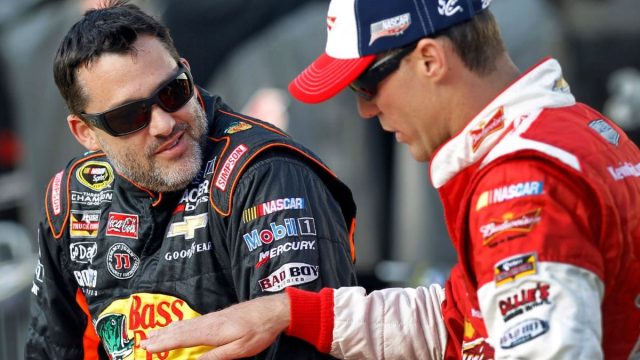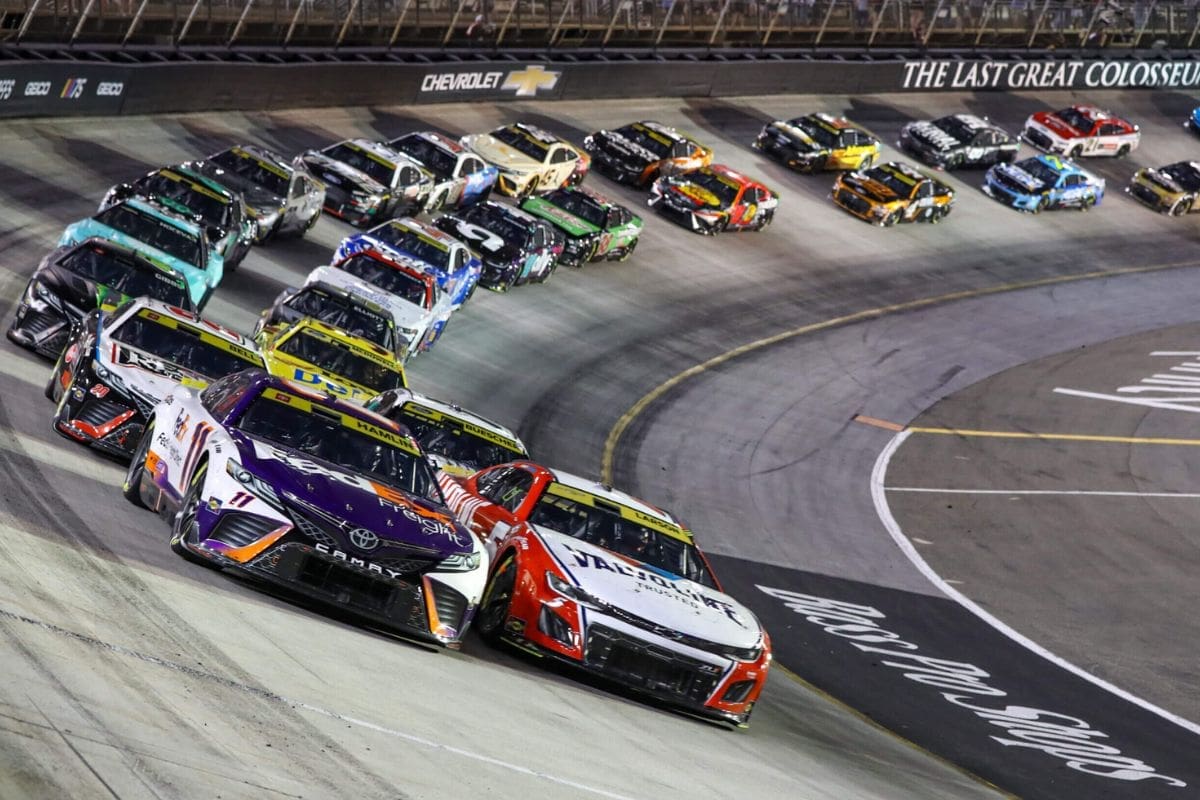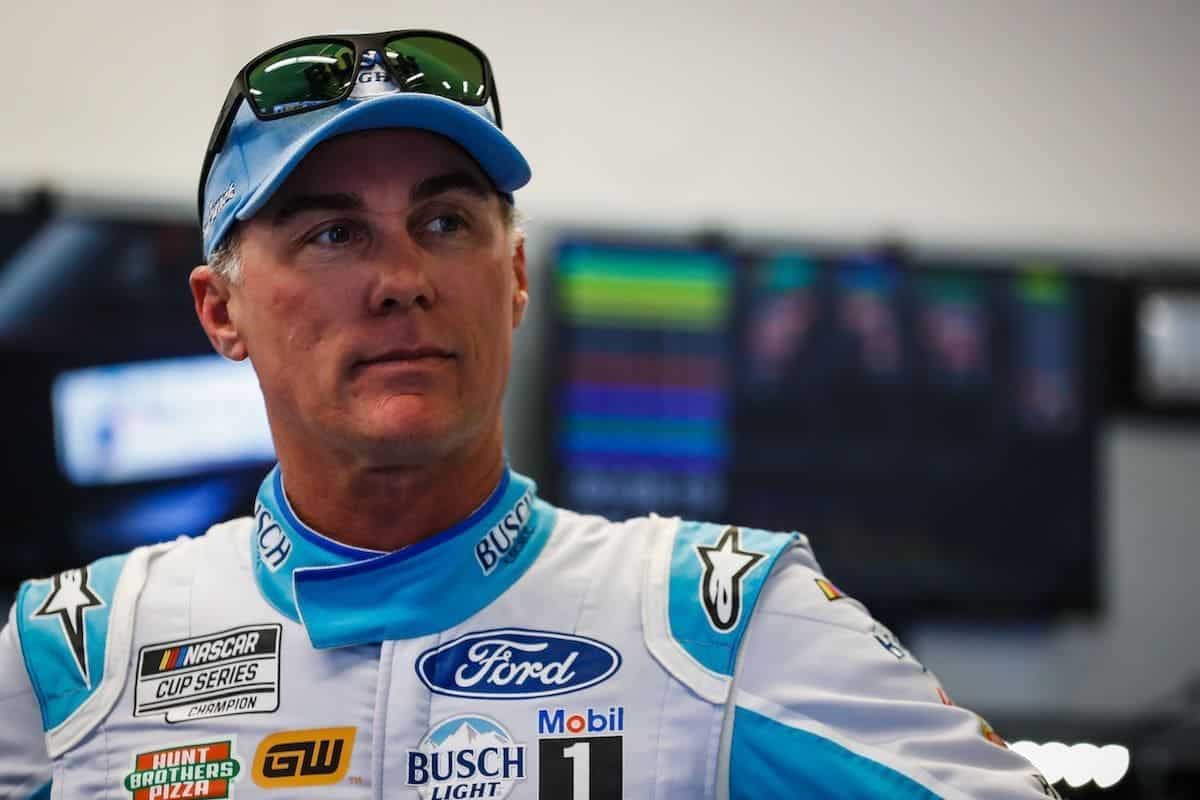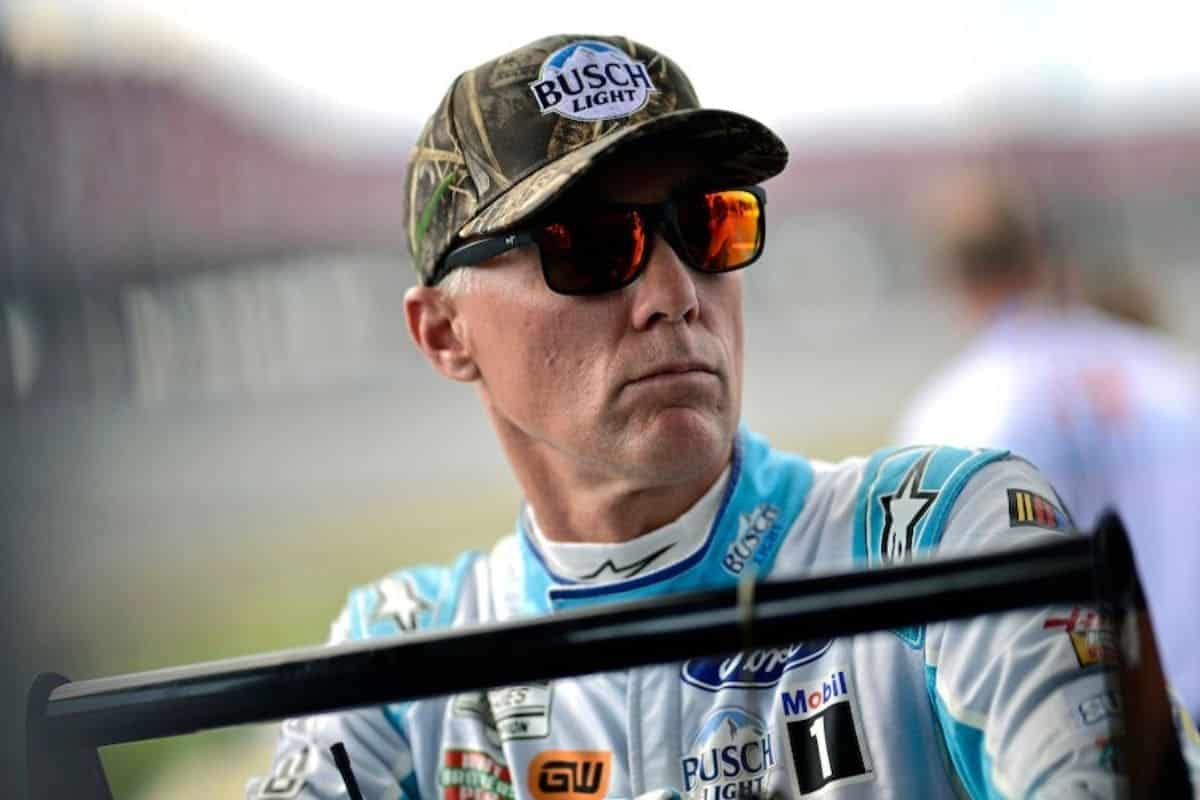Kevin Harvick Highlights Tony Stewart’s Struggles: Kevin Harvick‘s recent comments have cast a spotlight on the significant hurdles Tony Stewart faces as a NASCAR team owner, particularly with Stewart-Haas Racing (SHR). Harvick pointed to key issues such as maintaining morale, retaining crucial staff, and ensuring transparent communication about the team’s future. These challenges have evidently affected both the performance of SHR drivers and the general loyalty of the team. As SHR struggles with these internal struggles, Harvick’s insights raise critical questions about the strategic adjustments needed to restore the team’s competitive edge. What specific steps can Stewart take to address these issues?
Key Highlights
- Kevin Harvick emphasizes the risk of mass departures and staff poaching affecting Stewart-Haas Racing’s stability.
- Harvick points out mechanical failures and strategic missteps leading to SHR drivers’ performance decline.
- The uncertainty within the team is causing mental strain, hampering driver focus and crew efficiency.
- Harvick highlights the competitive advantages gained by rival teams acquiring SHR’s skilled professionals.
- SHR’s diminishing playoff prospects are exacerbated by technical challenges and a highly competitive NASCAR field.
Challenges Faced by Stewart-Haas Racing After Exit Announcement
Following Stewart-Haas Racing’s announcement of their impending exit from NASCAR, the organization faces considerable challenges in retaining its team members throughout the remainder of the season. The uncertainty surrounding the future of the team has naturally led to a state of flux within the workforce, with many employees actively seeking new employment opportunities. This could destabilize the team’s operations and performance.
The primary challenge lies in maintaining morale and commitment among team members who are now uncertain about their job security. With the knowledge that the organization will cease operations, employees, including drivers and support staff, are understandably motivated to secure their future livelihoods. This situation could potentially result in a mass departure before the season concludes, leaving the team understaffed and underprepared for upcoming races.
Moreover, the impending exit has implications for recruitment and temporary staffing. Attracting temporary talent to fill the gaps left by departing employees becomes increasingly difficult as the season progresses. The allure of joining a team with a known expiration date is minimal, complicating efforts to maintain operational efficiency.
Leadership within Stewart-Haas Racing must navigate this turbulent period by implementing strategies to retain critical staff. This might include offering retention bonuses, providing career support assistance, and fostering a sense of loyalty and purpose despite the looming closure. Additionally, transparent communication about the team’s plans and the reasons behind the exit could help in mitigating uncertainties and retaining key personnel.
Impact on Team Performance and Employee Loyalty
The departure of Stewart-Haas Racing is greatly undermining team performance and eroding employee loyalty. The announcement has created an unmistakable domino effect within the organization, impacting both morale and on-track results.
With the entire team’s future in flux, a palpable sense of uncertainty has permeated the garage, affecting driver focus and crew efficiency. The mental strain of an uncertain future often translates into diminished performance, and this is evident in SHR’s recent lackluster results.
In an environment where peak performance is critical, the distraction of an impending exit can be detrimental. Drivers, knowing that their seats for the next season are in damger, may struggle to maintain the mental fortitude required for top-tier racing. Their ability to strategize effectively and make split-second decisions on the track is compromised, leading to subpar performances that further jeopardize their future prospects.
Moreover, the impact extends beyond the drivers to the entire team, including engineers, mechanics, and support staff. These employees, facing job insecurity, may find their commitment waning, leading to a decline in the quality of work. Employee loyalty, a cornerstone of any successful racing team, is eroded as individuals begin to seek stability elsewhere.
Concerns Raised by Kevin Harvick and Rodney Childers
Kevin Harvick and Rodney Childers have expressed significant concerns regarding the potential poaching of key personnel from Stewart-Haas Racing amid the team’s ongoing uncertainties. As Harvick’s former crew chief and a pivotal part of the No. 4 team, Childers has highlighted the increased vulnerability of SHR’s workforce, including drivers, engineers, mechanics, pit crew, and road crew members, to rival teams seeking to capitalize on the situation.
“I think you can talk about loyalty and you can talk about everybody wanting to stay together, but in the end, everybody needs to take care of their families, and you can try to pay them as much as you want, but the people have to have jobs when they get to the end of the year. They don’t want to be last in line.” – Harvick
The poaching scenario is especially worrisome considering the current scarcity of skilled professionals in NASCAR.
- Loss of Expertise: Experienced personnel are essential to the team’s performance. Their departure could result in a significant knowledge gap, hindering SHR’s ability to compete effectively.
- Team Cohesion: The potential departure of multiple team members could disrupt the established working dynamics, impacting the team’s morale and functionality.
- Competitive Edge: Rival teams acquiring SHR’s key personnel could gain valuable insights into their strategies and operations, thereby strengthening their competitive standing.
- Uncertainty and Instability: The ongoing poaching threats create an environment of uncertainty and instability within SHR, making it challenging to maintain focus and long-term strategic planning.
Childers has conveyed a message of unity, emphasizing that his team is committed to sticking together during these turbulent times. However, Kevin Harvick’s perspective suggests that maintaining this cohesion may not be feasible given the current industry dynamics.
“I would say if those employees aren’t under contract, you’re going to have a really tough time keeping them. And I would say you’re still going to have a tough time with the employees that are under contract. Just because of the fact that you got to look out for yourself at some point, as they did for their scenario.” – Harvick
Performance Decline of SHR Drivers
SHR drivers are currently grappling with a noticeable decline in performance, marked by a series of disappointing finishes and mechanical failures. The team’s downturn is particularly evident with the #4 car and Josh Berry, who had shown promise earlier in the season. A tire failure at Gateway led to Berry’s initial DNF finish of the season, followed by a significant pile-up at Sonoma. From two top-10 results to consecutive DNFs, the #4 team is undeniably feeling the implications of SHR’s exit announcement.
Noah Gragson, perhaps the most consistent performer among the SHR drivers, has also faced a slump. Following a wreck at the Coca-Cola 600, Gragson’s subsequent performances have seen him finish outside the top 20 in his last three starts. This marks his worst streak in 16 races this year. Despite these setbacks, Gragson retains the support of Bass Pro Shop, which could be critical for his prospects next season.
Senior driver Chase Briscoe is encountering similar difficulties. After a P5 finish at Darlington, Briscoe has failed to place inside the top 15 in his last three attempts, also suffering his initial DNF of the season at Sonoma. Briscoe, the only SHR driver previously inside the top 16 in the points standings, now finds himself precariously positioned as he aims to make the playoffs on points.
Meanwhile, Ryan Preece’s recent performances have been largely unremarkable, adding to the overall struggles of the SHR lineup. The collective decline in performance highlights the significant challenges facing SHR as they navigate through an increasingly competitive NASCAR season.
Outlook for the Future and Playoff Chances
As SHR drivers grapple with ongoing performance issues, their prospects for securing a spot in the playoffs appear increasingly bleak. The current trends indicate that the team’s chances of placing any of its four drivers in the final 16 are dwindling, a stark contrast to their past successes. This outlook necessitates a thorough examination of the factors contributing to this downturn, as well as strategic adjustments to reverse the trajectory.
- Consistent Underperformance: SHR’s drivers have struggled to maintain competitive lap times and finishes. This consistent underperformance has resulted in a lack of top-10 finishes, crucial for accumulating the points needed for playoff qualification.
- Technical Challenges: The team has faced numerous technical setbacks, from aerodynamic inefficiencies to engine reliability issues. These challenges have not only hampered race-day performance but have also strained resources and morale within the team.
- Competitive Field: The NASCAR field is increasingly competitive, with other teams making significant advancements in car performance and strategy. This heightened competition has made it difficult for SHR to secure the points necessary to climb the standings.
- Strategic Missteps: There have been several strategic missteps during races, including pit stop errors and questionable call strategies. These miscalculations have cost the team valuable positions and points, further diminishing their playoff prospects.
For SHR to turn their season around, a multifaceted approach is crucial. This includes addressing technical issues, refining race strategies, and possibly reevaluating driver performance. Without significant improvements in these areas, the likelihood of seeing an SHR driver in the playoffs remains slim.
News in Brief: Kevin Harvick Highlights Tony Stewart’s Struggles
The insights provided by Kevin Harvick and Rodney Childers elucidate the multifaceted challenges faced by Stewart-Haas Racing, including maintaining team morale, retaining critical staff, and ensuring transparent communication.
These issues have directly impacted team performance and employee loyalty, contributing to a decline in driver success.
As Stewart-Haas Racing navigates these obstacles, strategic adjustments are imperative to reverse the current performance trajectory and improve the team’s prospects for future playoff chances.
Our Reader’s Queries
Q. Are Kevin Harvick and Tony Stewart friends?
A. Tony Stewart and Kevin Harvick have been so close that when Stewart decided to leave Joe Gibbs Racing to start his own team in 2009, Harvick followed suit. He left Richard Childress Racing, where he had driven the #29 car for nearly a decade, to join Stewart’s new venture.
Q. Why did Tony Stewart quit NASCAR?
A. Tony Stewart’s Passion for Elevating Drag Racing. For SHR owner Tony Stewart, leaving NASCAR was about joining something special. In drag racing, he discovered a community of passionate individuals dedicated to taking the sport to new heights.
Q. Is Kevin Harvick racing in 2024?
A. Kevin Harvick Inc. (KHI) announced today that co-owner Kevin Harvick will get back behind the wheel of the No. 62 Chevrolet. He’ll race at Five Flags Speedway on June 28, 2024, and North Wilkesboro Speedway on August 3, 2024.
ALSO READ: Kevin Harvick’s Debut Year in FOX NASCAR Booth Wraps Up



